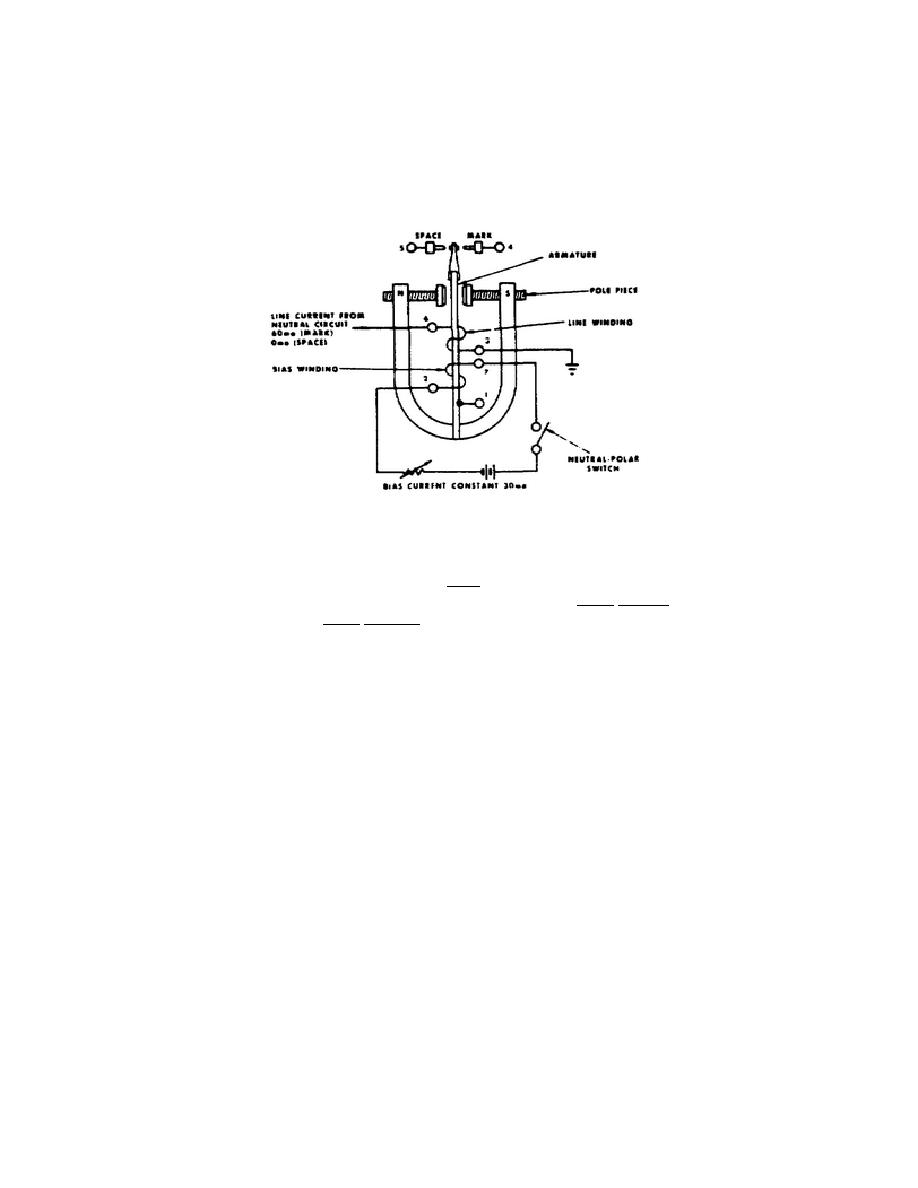
c. A polar relay operates on the principle of balanced magnetic fields. Assume for the moment that the armature
sits precisely half-way between the pole pieces and that neither winding is connected for current flow. The shunt path,
consisting of the permanent magnet and the soft-iron armature, balances the lines of force between the armature and pole
pieces. If the armature is forcefully moved toward one pole piece or the other, the armature will snap over that way and
will stay there because the magnetic field is now unbalanced in that direction. Moreover, the armature will remain there
unless forcefully moved past midpoint toward the other pole piece, at which time it will remain on the other contact until
moved.
FIGURE 84. The Send (Polar) Relay Wired
for Neutral-to-Polar Operation
d. The direction of bias current is important. It must flow through the bias winding to cause the armature to
move to the SPACE contact. When this condition exists, the relay is said to be poled spacing. (If bias current flows in the
opposite direction, the relay is said to be poled marking.)
e. The input to the line winding of a send relay is the neutral signal from a teletypewriter. The magnetic force
set up by the line winding mark current completely overcomes the force set up by the bias winding and the armature
swings over to the MARK contact. When current ceases (space), the magnetic force set up by the bias winding swings
the armature back to the SPACE contact. Each mark pulse causes the armature contact to touch the MARK
176



 Previous Page
Previous Page
